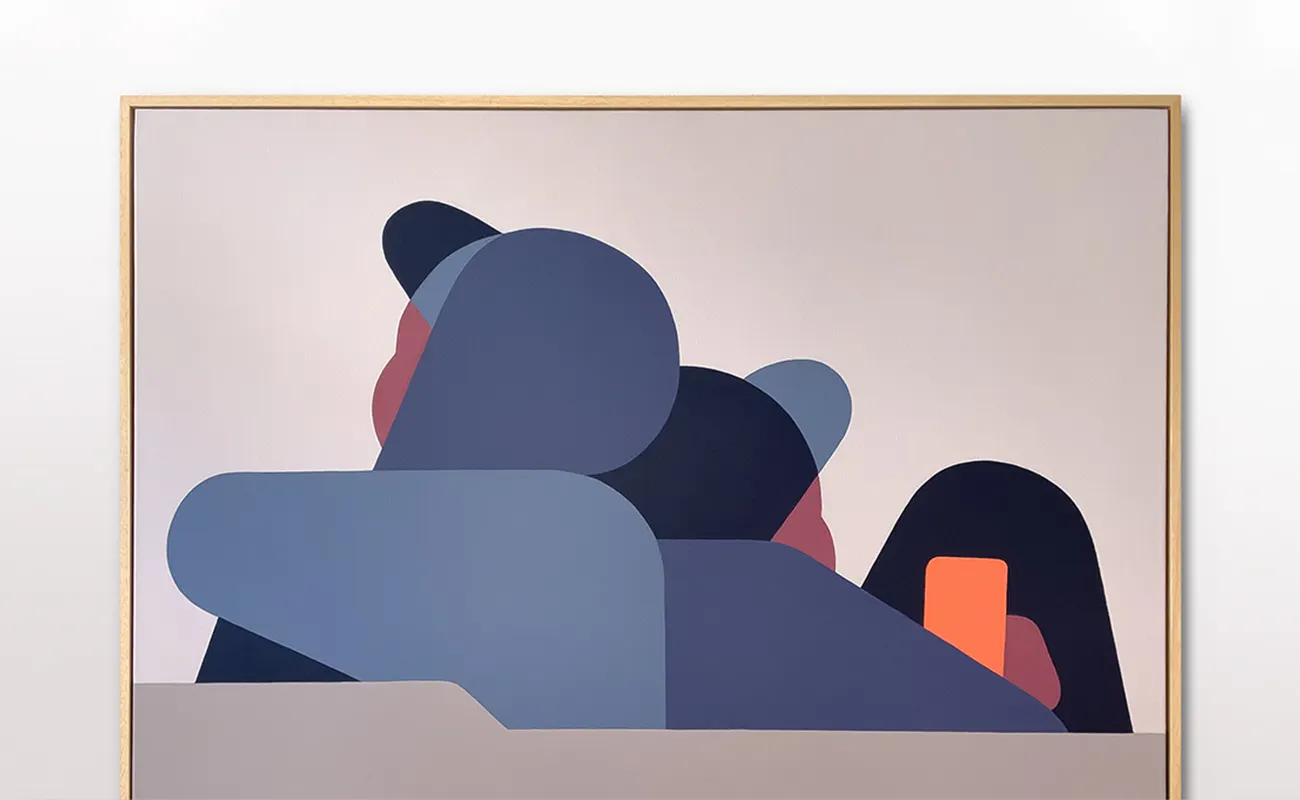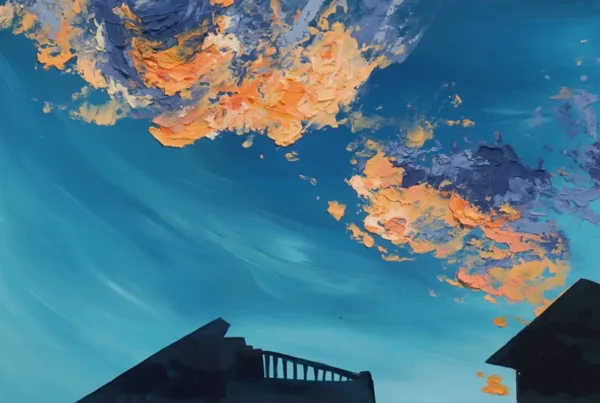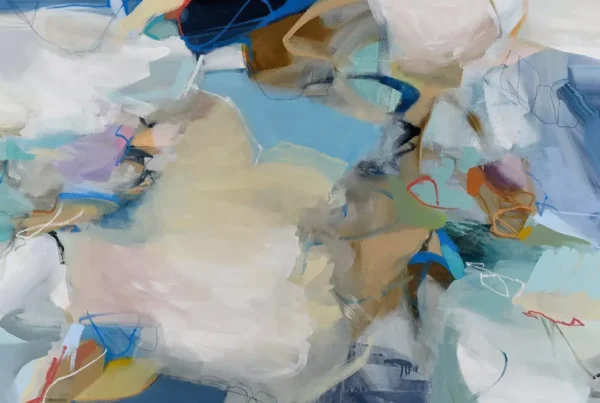From Graphic Design to Fine Art: The Evolution of a Distinct Style
Jérôme Masi has cultivated a striking artistic voice that seamlessly blends graphic precision with emotional depth. Born in France, based in the picturesque town of Annecy, Masi’s journey began with a foundation in graphic design before transitioning into the refined, minimalist aesthetic he is known for today. His education at the Émile Cohl School in Lyon set the stage for his exploration of visual storytelling, a skill that he has carried throughout his career. Over the years, his style has evolved into a distinctive fusion of geometric forms, clean lines, and a restrained color palette that captures both simplicity and introspection.
Masi’s early influences included masters of figurative expression like Francis Bacon and Lucian Freud, whose work sparked his interest in modern interpretations of the human form. While his initial artistic endeavors were rooted in various creative fields—ranging from video game design to digital illustration—his affinity for minimalism became increasingly prominent. Inspired by architecture, graphic design, and the economy of visual elements, he gradually stripped his work down to its most essential components. This pursuit of clarity and impact led him to refine his compositions, focusing on how form and color could communicate complex emotions with the fewest possible elements.
Despite its simplicity, Masi’s art is deeply conceptual. His subjects, often faceless and rendered in stylized silhouettes, evoke a sense of universality that invites viewers to project their own emotions and experiences onto the imagery. Themes of memory, time, and human connection frequently emerge in his work, reflecting his ongoing exploration of how art can encapsulate fleeting moments and unspoken emotions. His ability to balance visual restraint with profound meaning has established him as a compelling force in contemporary minimalism.
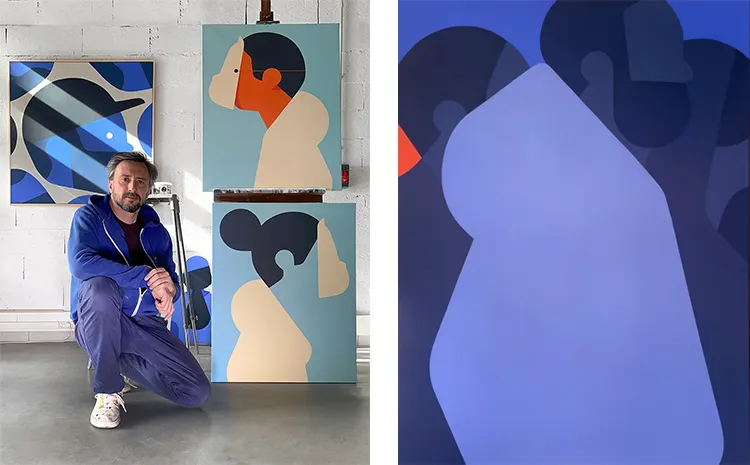
Jérôme Masi: The Essence of Minimalism in Contemporary Art
Minimalism is more than an aesthetic choice for Masi—it is a philosophy of expression. Rather than overwhelming the viewer with elaborate details, he distills his compositions down to their fundamental forms, allowing each shape and hue to carry intentional weight. His approach is not about the absence of complexity but rather the refinement of it. By working within a limited visual vocabulary, he challenges himself to communicate as much as possible with as little as necessary. This reductionist method aligns with his fascination with design principles, where clarity and function are paramount.
Color, in particular, plays a crucial role in his work. Masi employs a controlled palette, often favoring muted tones punctuated by bold accents that guide the viewer’s attention. His compositions rely on contrast and balance, drawing from the harmony found in architecture and modernist design. Each piece is carefully composed, with negative space serving as an active element rather than an absence. This calculated approach reinforces the contemplative nature of his work, encouraging the audience to engage beyond the immediate visual impact.
His artistic language, though minimal, resonates with emotional depth. Masi’s figures, devoid of facial features, become symbols of universal experiences—solitude, nostalgia, intimacy, and introspection. By removing specificity, he creates room for interpretation, allowing viewers to connect with the artwork on a personal level. His work serves as a quiet yet powerful meditation on the ways we perceive and process the world around us, proving that simplicity does not equate to a lack of substance.
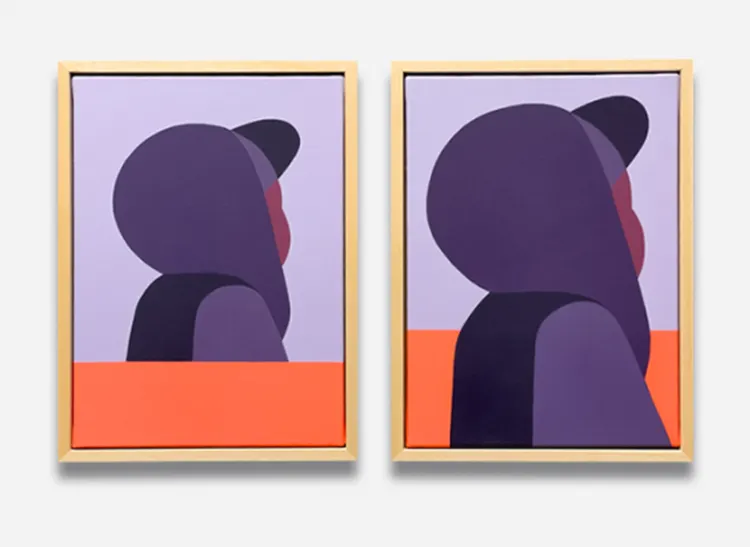
Exploring Themes of Time, Memory, and Playfulness
At the heart of Masi’s artistic practice lies a deep engagement with the themes of time and memory. His compositions often feel suspended in a moment—paused in a way that prompts reflection on the passage of time. Whether through the stillness of a solitary figure or the interplay of abstract shapes, his work invites contemplation on how we experience and hold onto fleeting emotions. This introspective quality stems from his own reflections on personal and collective nostalgia, particularly the way childhood memories shape our understanding of the present.
One recurring motif in his work is the exploration of childhood as a metaphor for simplicity and purity. Masi often revisits this theme, using visual elements that evoke innocence and playfulness. The way he distills complex emotions into clean, geometric forms mirrors the way we remember moments from the past—fragmented yet profound. His ability to translate these abstract ideas into tangible visuals gives his work a universal appeal, allowing people from different backgrounds to find their own stories within his art.
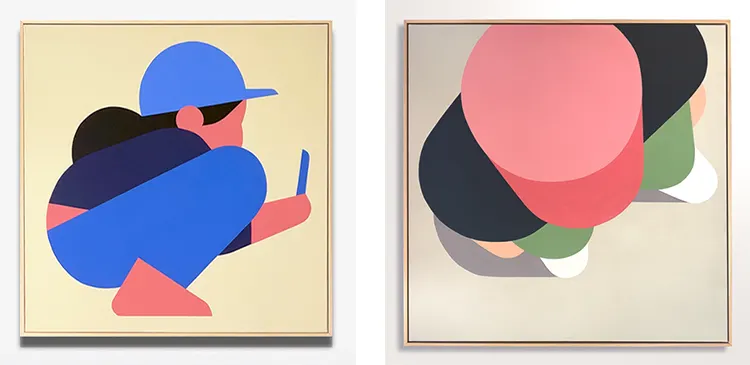
Jérôme Masi: A Creative Life Rooted in Balance
Masi’s creative process is as structured as his artwork. His days begin with a bike ride to his studio, a ritual that helps clear his mind before he immerses himself in work. He often juggles multiple projects at once, balancing personal artistic explorations with commissioned pieces. Working primarily in digital media for commercial projects, he also dedicates time to canvas-based work, allowing for a different kind of creative engagement.
Time is both a central theme in his work and one of his biggest challenges as an artist. The act of creating requires patience and an acute awareness of the moments spent refining each piece. For Masi, the greatest difficulty lies in carving out enough time to fully realize his artistic vision while navigating the demands of daily life. Yet, this challenge is also what makes the process rewarding—each completed work becomes a testament to the hours of thought and dedication behind it. His goal is to create something timeless, a piece that continues to resonate long after it leaves his hands.
Beyond his studio practice, Masi finds fulfillment in the simple joys of life. As a father of three, he cherishes time spent with his family, embracing the natural beauty of Annecy through outdoor activities like hiking and skiing. This connection to nature serves as both a grounding force and a source of inspiration. Just as his art seeks to distill complexity into simplicity, his personal life is a reflection of that same pursuit—finding balance between work, creativity, and the people who matter most.
With numerous collaborations and exhibitions on the horizon, Masi’s journey as an artist continues to evolve. His work, rooted in precision and emotion, challenges the notion that minimalism is devoid of depth. Instead, he proves that within the most pared-down forms lies an entire world of meaning, waiting to be discovered.



